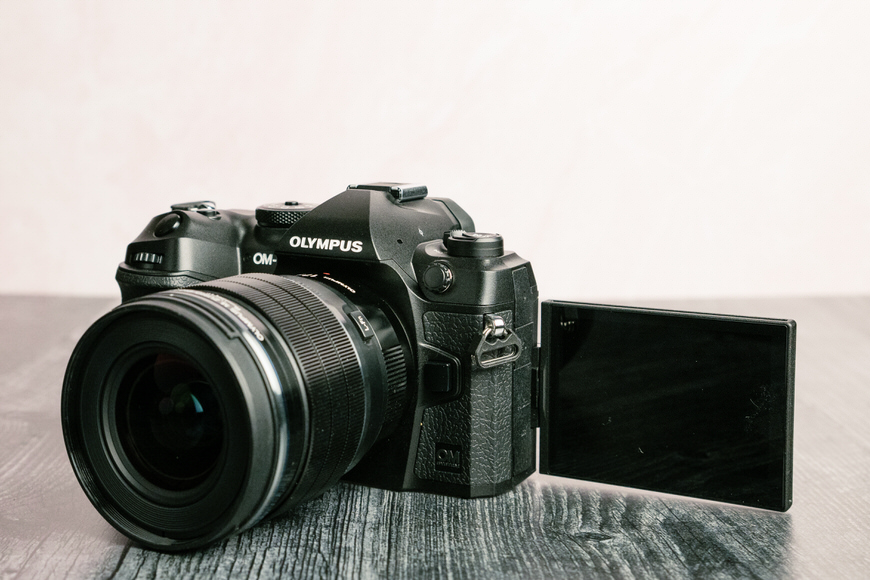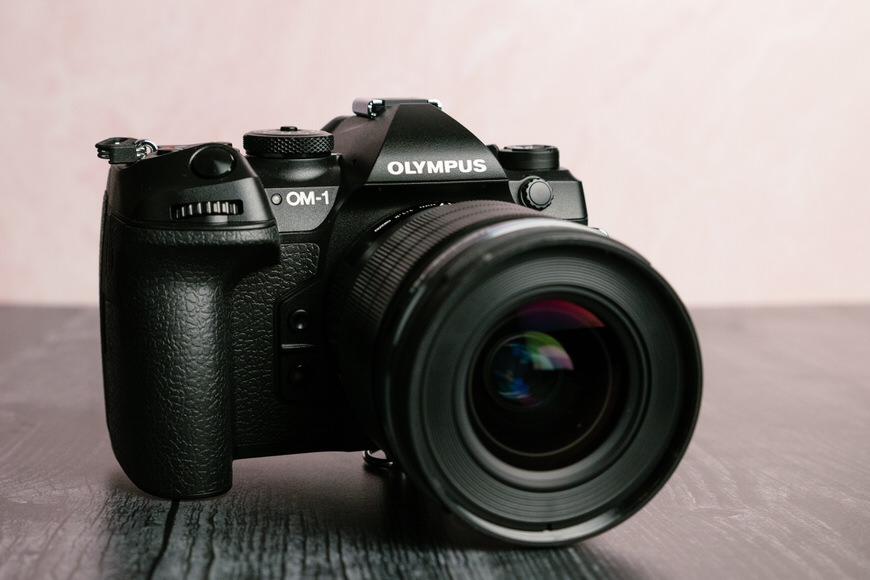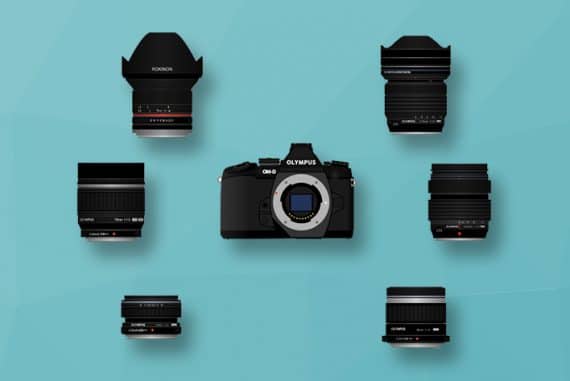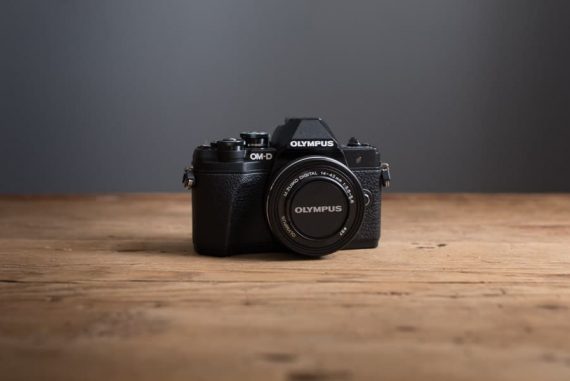
Olympus OM System OM-1 Micro Four Thirds Camera Review
Does this high-end micro four thirds mirrorless camera from OM Digital Solutions (the company that bought Olympus) hit the mark? Find out in my review.
I started my wedding photography career with Olympus cameras.
After a few years, I moved to their highly capable micro four-thirds mirrorless camera system.
However, after Olympus sold off the camera division and was rechristened OM Digital Solutions, it really gave pause to users of the system.
It also took a while to see any new products emerge….

Impressive autofocus, stabilization and image quality, all squeezed into a compact, weather-sealed body with plenty of affordable lens options.
Would this fresh flagship camera body, the newly named OM SYSTEM OM1, be a minor update or a major step forward?
I’m happy to report that this micro four thirds flagship is a modernization of the Olympus OMD-EM1 III and Olympus OMD EM1 X cameras.
OM Digital Solutions is marketing heavily to the wildlife / outdoor adventure crowd, as they well should since their cameras are designed for portability above all else.
However, if you are a micro four thirds user who photographs portraits, weddings, street photography, landscapes, and more, this camera system is still for you.
My review of the OM-1 will come from the perspective of an event photographer, and the image samples here will be portraits.
Table of Contents
OM SYSTEM OM-1 Micro Four Thirds Camera Specs
- Small and lightweight, yet ergonomically sound body.
- Very fast and accurate autofocus.
- Best in class in body stabilization.
- Best in class weather sealing.
- Excellent quality EVF.
- Much improved back side illuminated sensor.
- Professional grade buttons in a well thought out placement.
- Loaded with unique and useful features.
- Not best in class for high ISO image quality.
- Implementation for face / eye detect not intuitive.
- Video features still somewhat lagging behind competitors.
- Lens Mount – Micro Four Thirds
- Sensor Resolution – Actual: 22.9 Megapixel / Effective: 20.4 Megapixel
- Shutter Speed – Mechanical Shutter 1/8000 to 60 Seconds / Electronic Shutter 1/32000 to 60 Seconds
- ISO Sensitivity – Photo/Video 200 to 102,400 in Manual, Auto Mode (Extended: 80 to 102,400)
- Continuous Shooting Mechanical Shutter
Up to 10 fps at 20.4 MP for up to 139 Frames (Raw) / 169 Frames (JPEG)
Electronic Shutter
Up to 20 fps at 20.4 MP for up to 108 Frames (Raw) / 116 Frames (JPEG)
Up to 120 fps at 20.4 MP for up to 92 Frames (Raw) / 92 Frames (JPEG)
Up to 50 fps at 20.4 MP for up to 96 Frames (Raw) / 97 Frames (JPEG) - Internal Recording Modes H.265 Long GOP/MOV 4:2:0 10-Bit
DCI 4K (4096 x 2160) at 23.98/25/29.97/50/59.94 fps [77 to 152 Mb/s] UHD 4K (3840 x 2160) at 23.98/25/29.97/50/59.94 fps [77 to 152 Mb/s] 1920 x 1080p at 23.98/24.00/29.97/50/59.94 fps [22 to 42 Mb/s] H.265/MOV 4:2:0 10-Bit
1920 x 1080p at 23.98/25/29.97/50/59.94 fps [82 to 162 Mb/s] 1920 x 1080p at 100//200 fps
H.264 Long GOP/MOV 4:2:0 8-Bit
DCI 4K (4096 x 2160) at 23.98/25/29.97/50/59.94 fps [102 to 202 Mb/s] UHD 4K (3840 x 2160) at 23.98/25/29.97/50/59.94 fps [102 to 202 Mb/s] 1920 x 1080p at 23.98/25/29.97/50/59.94 fps [27 to 52 Mb/s] H.264/MOV 4:2:0 8-Bit
1920 x 1080p at 23.98/25/29.97 fps [202 Mb/s] 1920 x 1080p at 100//200/240 fps - EVF – 5,760,000 Dot 100% Coverage
- Autofocus Points Photo, Video Phase Detection: 1053
- Autofocus Sensitivity -6 to +19 EV
- Battery Type 1 x BLX-1 Rechargeable Lithium-Ion (Approx. 520 Shots)
- Dimensions (W x H x D) 5.3 x 3.6 x 2.9″ / 134.8 x 91.6 x 72.7 mm
- Weight 1.3 lb / 599 g (With Battery, Recording Media)
1.1 lb / 511 g (Body Only)
Build & Appearance

The OM System OM1 Camera with the 17mm f/1.2 lens attached.
This is one rugged little camera with a retro SLR design. Interestingly, the camera still bears the Olympus logo in homage to the 100-year imaging company and has been announced as the last one to do so.
OM System cameras are the only ones with an IP53 weather sealing rating. So be confident you can take it out into the great outdoors.
There are a plethora of buttons, including a dedicated AF on button and ISO button which I personally love.
Combine the terrific feeling grip along with a logical control layout, long battery life and two memory card SD slots (UHS II), a greatly improved high-resolution viewfinder, and we have the makings of a new camera that really deserves its pro moniker.
The previous version, the E M1 III is very similar in feel, but the OM 1 takes everything up a notch rivaling many full frame professional cameras in feel and layout.
If a photographer can get past sensor size, this camera is very compelling.

OM System OM1 Camera with articulating screen.
Ergonomics & Handling

OM System OM1 Camera with Olympus logo.
I have always liked the feel and handling of Olympus cameras, and this heritage has carried over.
The shutter release on this new camera is not quite as trigger-happy as in the past, and the AF system joystick appears to be more finely tuned as well.
Another user of full frame cameras commented that she found the camera incredibly light weight (the lenses make the difference) yet robust at the same time.
I had the pro-level lenses like the Olympus 17mm f/1.2 lens attached and one can go even lighter when mounting the premium series lenses such as the Olympus 17mm f/1.8 lens.
As a longtime user of Olympus cameras, the new menu system threw me for a minute. Objectively, it is more logical and, therefore better than before.
However, I don’t feel any camera system has solved this problem, although Panasonic is the best menu system I have used.
An optional OM SYSTEM HLD-10 Power Battery Holder is available if you need it for long shoots or value larger feeling cameras.
The same controls from previous iterations, like the 1-2 lever (set up two different cameras to easily and quickly switch), mode locking dial, and shortcut buttons, all make a return.
Just about every button or switch you see can be customized to do something else, hence the exposure compensation button became a white balance shortcut, and the AEL button toggled eye AF on and off for portraits.

Focus Performance

OM System OM1 + Olympus 17mm f/1.2 | 1/1600 f/1.2 ISO200
The OM1 AF performance is as excellent as past iterations of this line of cameras and has taken a step up in some areas and remained static in others.
For features such as subject detection and subject tracking, the OM SYSTEM OM-1 Mirrorless Camera is now right on par with other modern camera systems.
While the system has always had accurate focus, the improved continuous autofocus is probably due to the new cross quad-pixel AF system, which makes all 1,053 AF points cross-type phase-detection focus points. This allows the camera to catch focus nearly anywhere on the sensor.
I would advise using subject detection or regular C-AF over the system’s continuous AF+Tracking mode as that does much better with moving subjects. The camera focuses down to -6 EV, making it excellent for low-light autofocusing.
While I’m a bit of a control freak and like to tell that camera what to do in all aspects, including autofocus, I did let subject detection (eye and face) take over, and it did very well even when there were foreground obstructions.
Since the Olympus 17mm f/1.2 Pro Lens has very close autofocusing capabilities, taking control and reverting to single point on the glove in the image above was the correct choice.
The new TruePic X image processor gives the camera an instant on and, I’m sure, is also helping with the improvements to AF as well as the incredible continuous shooting speed of 50 fps shooting in continuous autofocus.
Low Light Performance

OM System OM1 + Olympus 17mm f/1.2 | 1/1250 f/5.6 ISO6400
High ISO performance has always been the Achilles heel of any micro four thirds camera.
On the left is the image processed in Adobe Camera RAW with no noise reduction alongside the same image with noise reduction applied.
The claim is that this new stacked sensor gives better image quality than the older cameras in the micro four thirds system, with a two stop better high ISO performance. I’d say this new sensor lives up to that claim.
Some photographers have different thresholds of tolerance when it comes to noise in their images and while this system will not produce as clean an image as a full frame sensor, it’s to the point where the gap has narrowed quite a bit.
Olympus OM-1 Image Quality
Here are some sample images shot with my Olympus OM-1 micro four thirds camera.

OM System OM1 + Olympus 75mm f/1.8 | 1/800 f/1.8 ISO200

OM System OM1 + Olympus 17mm f/1.2 | 1/1000 f/1.2 ISO200

OM System OM1 + Olympus 17mm f/1.2 | 1/320 f/1.2 ISO200

OM System OM1 + Olympus 17mm f/1.2 | 1/1000 f/1.2 ISO200

OM System OM1 + Olympus 17mm f/1.2 | 1/1600 f/1.2 ISO400
Improved image quality is usually the main reason for a camera upgrade and with sensor technology leaping ahead the past few years, it’s no surprise that the OM 1 has made the jump with it.
Personally, I’m a fan of the 20-megapixel sensor as this makes for better high iso noise performance and helps this camera retain its best in class image stabilization.
However, the hi-res mode can net you 50 megapixel images handheld and 80 megapixel images on a tripod and would be perfect for product photographers, real estate photographers and landscape photographers.
Wedding and event photographers would be best to shoot with the class of pro level f/1.2 prime lenses or even the Panasonic Leica DG Vario-Summilux 25-50mm f/1.7 or the Panasonic Leica DG Vario-Summilux 25-50mm f/1.7 zoom lenses to best compete with the look and low light performance of full frame cameras.
OM Digital Solutions claims a better dynamic range than any previous Olympus cameras, and I believe them, although conditions didn’t call for me to put this to a stress test in the scenes I was shooting.
Overall Performance
The OM SYSTEM OM-1 Mirrorless Camera is a speed demon.
It has an instant on and the new image processor appears to do wonders during continuous shooting and will only make the computational photography features such as pro capture, live composite, hi-res picture mode, subject detection, focus stacking, etc. even better.
This is the most responsive micro four thirds system camera to date.
Sports and wildlife shooters can now celebrate more than just the abundance of lightweight lenses in the system as this camera body will no doubt keep up.
For photographers who are looking to try modern AI features, the OM-1 can recognize formula cars, motorcycles, airplanes, helicopters, trains, and birds, as well as dogs and cats.
Portrait photographers have not been left out with face priority and eye priority autofocus.
Other Useful Features

OM System OM1 + Olympus 17mm f/1.2 | 1/4 f/2.8 ISO200
Even before the prevalence of smartphones, Olympus cameras featured a lot of computational photography wizardry. OM Digital Solutions continues this tradition with the following:
- High Resolution Mode (50mp and 80mp)
- Live Composite Mode (build your long exposure in real time)
- Live ND Mode (select from one of 5 different neutral density steps and use composite technology to simulate a long exposure)
- Focus stacking and focus bracketing
I’d also like to note the incredible dust reduction system. While there is no sensor shield to keep dust out while changing lenses, this dust removal system is enacted at start up and is best on the market for keeping your sensor clean.
It will be a rare occurrence that you will need a sensor cleaning with this camera.
Alternatives to the Olympus OM 1
Panasonic and Olympus share the mount, so it’s a safe bet to compare their camera bodies to each other. For stills photography (as well as video autofocus), the OM 1 beats out a competing products like the Panasonic G9 or Panasonic GH-6.
However, the video specs and codecs on the Panasonic cameras are far above that of the OM1. Although, those bodies still use contrast-based AF, making them inferior in continuous autofocus scenarios.
Hence the old adage that you buy Panasonic more for video and OM more for stills remains true. Both are capable of each task, but these are their strengths and weaknesses currently.
Value for Money
For a camera system packed with this many features, the approximately $2000 price tag is a very good value.
Now that OM Digital Solutions has proven that they are committed to updating these cameras and lenses, there is no need to worry that one is investing in a camera system that will be going away.
While a camera like the Nikon Z6 II is similar in price and size and weight, the full frame lenses you will need to to mount to it will negate any gains in portability and will cost more.
The micro four thirds system is still the most nimble. However, I despise the term “micro” and feel it does a disservice to marketing a camera like the OM 1 to professional photographers simply needing a small but capable set up.
The lens system is vast and very mature with offerings from OM Systems, Panasonic, Sigma, Voightlander, and more.
You’d be hard-pressed not to find a focal length or aperture value you may need either new or on the used market.
FAQs
Can Panasonic m4/3 lenses be used on the OM 1?
Yes, micro four thirds is an open mount with many options available.
Can this camera be used for sport?
Absolutely, it’s a speed demon.
Is this camera a good solution for video?
It is capable of excellent video (great for hybrid coverage) but does not have the codecs and video features that many pro videographers need.
OM SYSTEM OM-1 Camera Review | Conclusion
I left this system after Olympus sold off their camera division because I was concerned that, as a working pro, I’d be left in the dust from a technology point of view as well as for repairs and more. Now that I’ve tried the OM SYSTEM OM-1, I’m seriously considering buying back into it so I can have a small, yet capable camera system for weddings and events.
OM Digital Solutions has modernized their flagship camera and made a leap forward to stay on par with the rest of the industry. This is great news for users of all brands.
Before its release, executives from the company referred to their upcoming wow camera and while hyperbole is part of product marketing the OM1 does take a leap forward and pays great homage to the beloved 1970’s era film camera of the same name.
If you are already in the system, the OM1 is simply the best micro four thirds camera to date.
Here are some other micro four thirds camera reviews you may enjoy:

Impressive autofocus, stabilization and image quality, all squeezed into a compact, weather-sealed body with plenty of affordable lens options.













